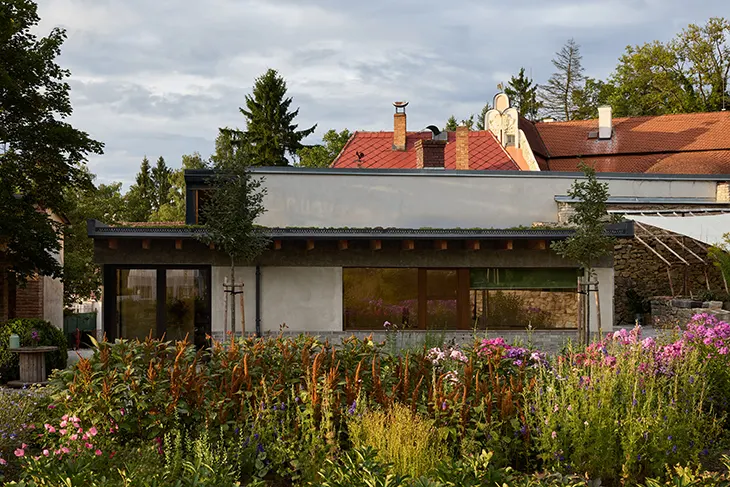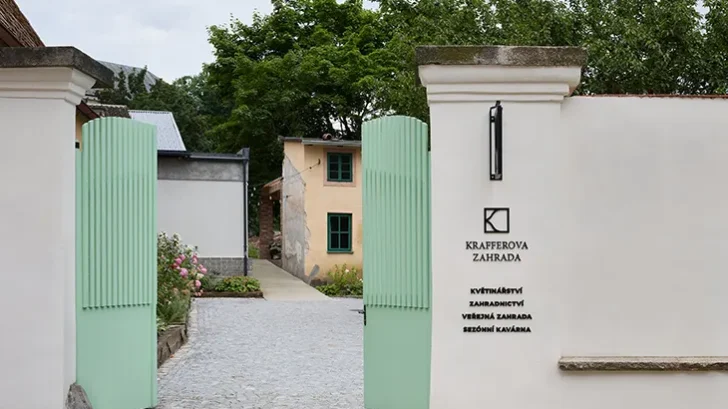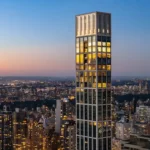
In the heart of Jindřichův Hradec, Kraffer Garden bridges centuries of horticultural heritage and contemporary public life. Once a forgotten nursery on the grounds of an 18th-century Baroque palace garden, the site has been revived by Ateliér Za Mák and Matěj Šebek Architekti into a living cultural and ecological landscape, a space where design, craftsmanship, and community coexist.
LANDSCAPE
The project’s layered history forms its foundation. Originally part of a Baroque estate, the garden was sold and transformed into a celebrated Kraffer family nursery that thrived for more than a century. After nationalisation in the 1950s, the complex declined, eventually becoming a derelict brownfield. Its rebirth began in 2021, when landscape architects from Ateliér Za Mák took over, reimagining the space as a community garden and cultural hub. The new Kraffer Garden retains traces of its past, integrating the geometrical order of the historic design with the spontaneity of modern ecological landscaping.

The garden is a geometric composition of terraces, restored according to a rediscovered 200-year-old terrain layout. The formality of the plan, rooted in Baroque order, is softened by wild, naturalistic planting. The result is a vivid tension between structure and spontaneity, between memory and renewal. Sustainability runs through every layer: recycled materials, rainwater management, and biodiversity enhancement redefine what a historic garden can mean in a contemporary town. Framed by a Baroque stone wall and lined with restored greenhouses, Kraffer Garden now serves as a public demonstration garden, hosting workshops, seasonal markets, and cultural events. It is a place to learn, rest, and engage, a civic landscape grown from design and care.
Architect Matěj Šebek and his team approached the architectural interventions with a similarly precise yet modest hand. On the garden’s northeastern edge, they inserted a new extension to replace deteriorating warehouses and greenhouses, opening the site to the public through a concrete ramp that connects directly to the terraces. The low building, housing a flower shop and landscape architecture studio, integrates seamlessly with the original structures and the Baroque enclosure wall. Its green roof, deep overhangs, and visible beams articulate an honest, functional architecture that sits lightly within its context.

Inside, the materials tell a quiet story: lime-washed walls, exposed ceramic blocks, and fragments of the original stone wall meet under a plywood ceiling. The architectural language is restrained and tactile, construction as a form of storytelling. The new extension doesn’t compete with the garden’s presence but enhances it, acting as a threshold between architecture and landscape.
What distinguishes Kraffer Garden is the dialogue between disciplines. The collaboration between Ateliér Za Mák and Matěj Šebek Architekti demonstrates how architecture and landscape can shape each other, how one defines and enriches the other. The project is less a completed work than an evolving organism: a site that continues to grow, host, and connect.




